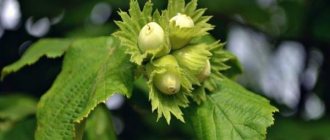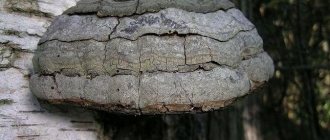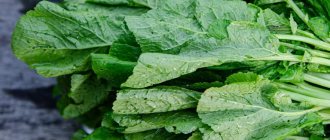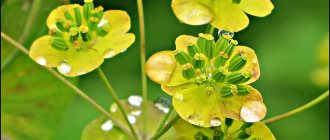Trametes versicolor gets its name from its bright colors. It has been used throughout the world for centuries to treat various diseases.
Perhaps the most impressive property of this medicinal mushroom is its ability to improve the health of your immune system.
Below we will look at 5 medicinal properties of multi-colored tramethes and how safe it is for use.
Trametes versicolor - medicinal properties and potential risks
Rich in Antioxidants
Antioxidants are compounds that help inhibit or reduce damage caused by oxidative stress.
Oxidative stress occurs due to an imbalance between antioxidants and unstable molecules known as free radicals. This can lead to cell damage and chronic inflammation ().
This imbalance has also been linked to an increased risk of certain types of cancer and cardiovascular disease (, ).
Fortunately, eating foods rich in antioxidants or taking these powerful compounds in supplement form can reduce oxidative stress and inflammation.
Trametes versicolor contains an impressive amount of antioxidants, including phenols and flavonoids ().
In fact, one study identified more than 35 different phenolic compounds in a sample of Trametes versicolor extract, as well as the flavonoid antioxidants quercetin and baicalein ().
Phenol and flavonoid antioxidants help promote immune system health by reducing inflammation and stimulating the release of protective compounds ().
For example, quercetin has been shown to promote the release of immunoprotective proteins such as interferon-y while inhibiting the release of the pro-inflammatory enzymes cyclooxygenase (COX) and lipoxygenase (LOX) ().
Summary:
Trametes versicolor contains high amounts of phenolic and flavonoid antioxidants, which help promote the health of your immune system by reducing inflammation and stimulating the release of protective compounds.
Contains immunostimulating polysaccharopeptides
Polysaccharopeptides are protein-bound polysaccharides (carbohydrates) found, for example, in Trametes versicolor extract.
Krestin (PSK) and polysaccharide peptide (PSP) are two types of polysaccharopeptides found in Trametes versicolor ().
PSK and PSP have powerful immunomodulatory properties. They stimulate the immune response by both activating and inhibiting certain types of immune cells and suppressing inflammation.
For example, test-tube studies have shown that PSP increases monocytes, which are types of white blood cells that fight infection and boost immunity ().
PSK stimulates dendritic cells, which increase immunity to toxins and regulate the immune response. In addition, PSK activates specialized white blood cells called macrophages, which protect your body from harmful pathogens such as certain bacteria ().
Due to their ability to naturally strengthen the immune system, PSP and PSK are commonly used as anti-cancer agents in combination with surgery, chemotherapy and/or radiation therapy in countries such as Japan and China ().
Summary:
PSK and PSP are powerful polysaccharopeptides found in Trametes versicolor that can boost the health of your immune system.
May improve immune function in people with certain cancers
Research has shown that Trametes versicolor may have antitumor properties, which are thought to be related to its immunomodulatory effects.
One test-tube study found that the polysaccharopeptide PSK found in these mushrooms inhibited the growth and spread of human colon cancer cells ().
Moreover, a certain type of polysaccharide found in Trametes versicolor, called Coriolus versicolor glucan (CVG), can suppress certain tumors.
In a study conducted on tumor-bearing mice, daily supplementation of 100 and 200 mg/kg body weight of CVG extracted from Trametes versicolor was found to significantly reduce tumor size ().
Researchers attributed this effect to an enhanced immune response ().
Another study found that daily supplementation of 100 mg/kg body weight of Trametes versicolor mushroom extract significantly slowed the spread of cancer cells and improved survival in dogs with highly aggressive cancer (hemangiosarcoma) ().
However, the most impressive evidence for the anti-cancer properties of Trametes versicolor came when it was used in combination with more traditional treatments such as chemotherapy and radiation therapy (, ,).
Summary:
Trametes versicolor contains compounds such as PSK and CVG, which may inhibit the growth of certain types of cancer.
Description of multi-colored trametes
Trametes multicolored consists of a cap attached sideways to the substrate. The leg is absent even in its rudimentary form. The shape is fan-shaped, rounded-folded. Very rarely it can form a petal rosette. The surface of the cap is dry, varnish-shiny, pleasantly silky. Partially covered with fine velvety pile. The edge is pointed or rounded, usually white and cream. The radius of the cap can vary from 2.5 to 10 cm.
Multi-colored trametes in appearance resembles a fancifully decorated bird's tail or a photo of Jupiter cropped in half. Concentric semicircles of varying widths and the most amazing colors go from the place of growth to the edge. All the colors of the rainbow are far from the limit for this original. The most common shades are black and dark brown, red-ocher-yellow, and blue-green. May have a grey-silver, cream, lilac or azure color.
Heminophore tubular. In a young mushroom, the mouths are barely distinguishable, the surface is velvety, white-cream and yellowish. Then the pores expand, becoming noticeable, angular, of various shapes, and the color darkens to brown-ocher and reddish-brown.
The pulp is dense, rubbery, very thin. It does not break and is difficult to tear. On the crack there is a fresh yellowish-brown mushroom. The dried fruit body has a white-beige color. The aroma is barely perceptible mushroom, the taste is practically not felt.
Attention! The motley tinder fungus is a perennial fruiting body.
The inner surface of the multi-colored tramethes is folded, the pores are almost invisible
May improve the effectiveness of some cancer therapies
Due to the many beneficial compounds found in Trametes versicolor, it is commonly used in tandem with traditional treatments for certain types of cancer, such as chemotherapy.
A review of 13 studies found that patients who received 1-3.6 grams of tramethes versicolor per day along with usual treatment had significantly better survival.
The study found that people with breast cancer, stomach cancer or colorectal cancer who were treated with Trametes versicolor and chemotherapy experienced a 9% reduction in mortality over 5 years compared to people treated with chemotherapy alone ().
Another review of 8 studies involving more than 8,000 people with stomach cancer found that those who received chemotherapy with PSK lived longer after surgery than people who received chemotherapy without PSK ().
A study of 11 women with breast cancer found that those who received 6-9 grams of Trametes versicolor powder per day after radiation treatment experienced an increase in the number of cancer-fighting cells in the immune system, such as killer cells and lymphocytes ().
Summary:
Several studies have shown that Trametes versicolor mushroom improves the effectiveness of both chemotherapy and radiation therapy in people with certain cancers.
May improve gut health
Maintaining a healthy balance of beneficial bacteria in your gut is critical to maintaining a strong immune system.
Your gut bacteria interact with immune cells and directly influence your immune response ().
Trametes versicolor contains prebiotics that help feed these beneficial bacteria.
An 8-week study in 24 healthy people found that daily intake of 3,600 mg of PSP extracted from these mushrooms resulted in beneficial changes in gut microbiota and suppressed the growth of possible problem bacteria such as E. coli and Shigella ().
In a test-tube study, Trametes versicolor extracts were found to alter the composition of intestinal microflora by increasing populations of friendly bacteria such as bifidobacteria and lactobacilli, while reducing potentially harmful bacteria such as clostridia and staphylococci ().
Having healthy levels of lactobacilli and bifidobacteria is associated with relief from symptoms such as diarrhea, a stronger immune system, lower cholesterol, a reduced risk of certain cancers, and improved digestion ().
Summary:
Trametes versicolor can positively influence the bacterial balance of the intestines, enhancing the growth of beneficial bacteria and inhibiting various pathogens.
Medicinal properties of tinder fungus
The mushroom is found only in Russia. In Japan, the healing qualities of tramethes are widely used. Various dosage forms are made from the pulp, in particular ointments and decoctions. They allow for therapy and prevention of various pathologies.
Polypore polypore is used in the complex treatment of malignant tumors of various locations. Mushrooms are included in the diet after chemotherapy. The use of Trametes can improve the condition of cancer patients.
Polypore polypore has general strengthening properties. Preparations made from tramethes have a beneficial effect on the immune and nervous systems. Mushrooms are used for viral diseases and insomnia.
Trametes extracts are used to reduce sputum production, remove fluid, and treat pulmonary pathologies. The mushroom is believed to strengthen bones and tendons.
Long-term use of trameta products can increase life expectancy
Restoration of liver function is due to the presence of polyunsaturated fatty acids. Taking dietary supplements containing trametes prevents the development of cholelithiasis.
It is known that polysaccharides contribute to the normalization of metabolic processes. These substances contained in mushrooms have a positive effect on hematopoiesis and hormonal levels.
We recommend reading: Agrimony: medicinal properties and uses, reviews
Kawaratake has a sorbing property. The use of products from Trametes allows you to cleanse the intestines, remove waste and toxins, and restore the microflora of the stomach.
Other useful properties
In addition to the benefits listed above, Trametes versicolor may also help improve health in other ways:
- May Reduce Inflammation : Trametes versicolor is rich in antioxidants such as flavonoids and phenols, which may reduce inflammation. Inflammation is associated with chronic diseases such as diabetes and some types of cancer ().
- Has antibacterial properties : In a test tube study, Trametes versicolor extract inhibited the growth of Staphylococcus aureus and Salmonella enterica, bacteria that can cause disease and infection ().
- May Improve Athletic Performance : A study in mice found that Trametes versicolor extract improved physical performance and reduced fatigue. Additionally, mice given Trametes versicolor had lower blood sugar levels at rest and after exercise ().
- May Improve Insulin Resistance : A study on rats with type 2 diabetes found that Trametes versicolor extract significantly lowered blood sugar levels and improved insulin resistance ().
Research is currently ongoing into the beneficial properties of this medicinal mushroom, and more information about its effects on the body may be discovered in the near future.
Summary:
Trametes versicolor may improve insulin resistance, help fight pathogenic bacteria, reduce inflammation, and improve athletic performance.
What it looks like and where it grows
The multi-colored tinder fungus resembles a polyp in appearance. However, this is not quite true. Trametes versicolor is a full-fledged mushroom. Appearing on rotting stumps and trees, it has both a cap and a stalk, pulp, and spore powder. The mushroom has several names:
- Trametes, or multi-colored tinder fungus;
- trameta;
- peacock tail.
The perennial cap represents approximately 80% of the fruiting body and has the shape of an unfinished semicircle. In rare cases, it resembles a fan or rosette. The width of the cap varies and depends on the age of the mushroom. Typically the diameter is 5-10 cm. These figures may increase as the fungus grows. It is noteworthy that the cap is not flat. Its width can reach 5 cm.
Polypore polypore is included in the subspecies of sessile mushrooms. It grows on trees, growing its cap to the surface. The trameta is covered with thin lines of various shades. There is an alternation of smooth and fleecy textures. The edges of the cap are light in color, indicating a small amount of nutrients.
The main characteristic of this species of tinder fungus is its variety of colors. Trametes has shades of the following colors:
- white;
- red;
- yellow;
- black;
- blue.
Usually the surface of the cap is silky and shiny. Its base is narrowed. Near the thin and short stem it has a greenish color. Under the cap there are tubular formations containing spores.
The leg of the multi-colored tinder fungus is up to 2 cm long. It provides a tight attachment to a tree or stump. The shade of the leg varies from brown to green. It darkens as the fungus grows.
The flesh of the multicolored tinder fungus has a light shade. When exposed to air, it turns brown. The leathery flesh has a pleasant aroma. When the fruiting body ripens, it turns brown. The tubes become thinner and stick together.
We recommend reading: Stevia sugar substitute: benefits and harms, properties and contraindications
Intensive growth of polypore polypore is observed in the second half of June. It slows down sharply towards the end of October. Trametes does not like direct sunlight, preferring northern territories. Often mushrooms do not grow in a single copy on old wood. They are usually found in small groups.
The breeding season of the multicolored tinder fungus covers the time from July to the end of August
Is Trametes versicolor safe?
Trametes versicolor is considered safe, with few side effects identified in studies.
Some people may experience digestive tract-related symptoms such as gas, bloating, and dark stools when taking this mushroom.
When used as a cancer medication along with chemotherapy, side effects including nausea, vomiting, and loss of appetite have been reported (,).
However, it is unclear whether these side effects were related to Trametes versicolor or traditional cancer therapy ().
Another potential side effect of Trametes versicolor is darkening of the fingernails ().
Although it has a good safety profile, it is recommended that you talk to your doctor before starting to take Trametes versicolor supplements.
Summary:
Taking Trametes versicolor may cause side effects such as diarrhea, gas, vomiting and darkening of the nails.
Preparations from parsley
In pharmacology, pestle is used everywhere. Extracts from the mushroom are used in various preparations. One of the most popular is the immunomodulator drug “Christin”. It is based on polysaccharides. The drug is used to relieve inflammation in the body.
Preparations made from tinder fungus are certified and approved for sale in pharmacies around the world. Parsley extract is absolutely safe for humans and does not cause side effects. Most often, medications based on tinder fungus are produced in the form of powders.
The use of mushrooms in pharmacology has a number of requirements. Specimens collected in natural conditions are not used in the preparations. Only tinder fungus grown artificially is used. This is due to the danger of mushrooms that grow in wildlife. The fact is that the collection and use of individuals near roads or hazardous heavy industries can cause serious harm to the human body. When consuming such specimens, a person may become poisoned and experience hallucinations.
Summarize
- Trametes versicolor is a medicinal mushroom with an impressive number of medicinal properties.
- It contains many powerful antioxidants and other compounds that can help strengthen the immune system and even help fight some types of cancer.
- In addition, Trametes versicolor can improve the balance of gut bacteria, which can have a positive effect on your immunity.
- With all the medicinal properties of tramethes versicolor, it is not surprising that it is a popular natural remedy for promoting health.
Tags: Trametes multi-colored
- Related Posts
- Vitamin E overdose: symptoms, consequences, treatment
- What is beta-carotene, where is it found and how is it useful?
- Lycopene: benefits, what products contain it
« Previous entry










